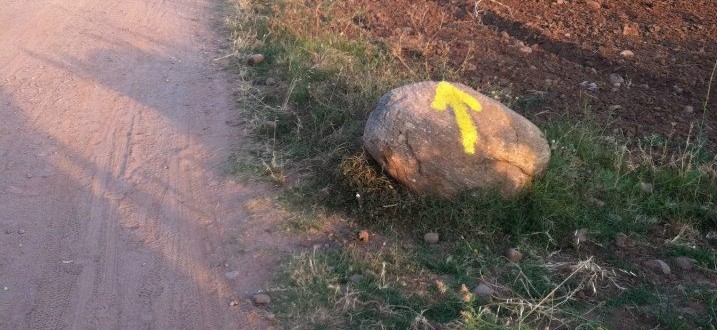Awakening :: Week 3
The posture of pilgrimage and the practice of contemplative prayer have been vital to my awakening. As I have awakened, I’ve endured brokenness, confronted the false self and experienced newrevelation of the Love of God. Awakening is difficult and life altering, but the glory of God compels nothing less.
Months prior to setting out on the Camino, I had a sense that I would not be the same when I returned. In a state of awakening, my identity was being shaken and dismantled and I was entering an internal nakedness. It’s difficult to describe this experience. Only in hindsight can I really name it for what it was. I felt like I was losing my orientation for life, relationships and service. During prayer I would often find myself in tears and not know why. (This is an outward sign of what the Cistercian monk and modern mystic, Thomas Keating calls “divine therapy.”) I found myself needing to differentiate in new ways from my husband, my community and my work. But that left me feeling very insecure with seemingly no anchor to keep me stabilized. Jesus points to this transformation when he says, “He who seeks only himself brings himself to ruin, whereas he who brings himself to nothing for my sake discovers who he is” (Matthew 10:39 NAB).
In this internally exposed condition I felt vulnerable, insecure and fragile. Symbolized by pilgrimage but realized through awakening, I was finding out that I wasn’t who I thought I was. Meet the false self—the shadow of who we truly are, the expression of who we are that pales in comparison to the truth of who we were created to be. The false self is so much a part of our identity that we don’t know it is there. We don’t distinguish it from our true self.
St. Paul taught about the false self and true self using the language of “old and new creation” in 2 Corinthians. “Therefore, if anyone is in Christ, [she] is a new creation; the old has gone, the new has come!” (2 Corinthians 5:17 NIV). He also described the battle between the two in the process of being transformed into the likeness of Christ. “I don’t understand what I do—for I don’t do the things I want to do, but rather the things I hate. . . . This makes me the prisoner of the law of sin in my members” (Romans 7:15, 23).
Watchman Nee, the famous Chinese Christian author and church leader of the early twentieth century, expanded on this teaching and spoke of the “old man” and the “new man.” Thomas Merton, Trappist monk, spiritual writer, poet and social activist, wrote of this ideology as the “false self” and “true self.” Mystics throughout the ages have spoken and written prolifically on this state of our human condition.
Reflection
The Christian life involves an ever more liberating process of sanctification by which the false self/old self/old creation is dismantled and the true self/new self/new creation comes into more being.
The false self is not easy to realize. It’s so much a part of who we are that we don’t notice it. Only by choosing to awaken will we begin to see this part of our self. The false self is the part of us that masquerades as the real self. It can be recognized by the masks we wear.
Take a moment to consider what masks you wear. Henri Nouwen helps us understand that generally our masks take the shape of identities and behaviors that feed our ego in one of three ways: 1) What I do (power) 2) What I have (possessions) and 3) What others say about me (prestige).
My false self often masquerades as the compliant, good girl who puts everyone else’s needs before her own. The classic people-pleaser. (prestige)
Your false self might masquerade as the one who accomplishes great feats or endeavors, or is just simply over-identified with the work you do in the world. (power)
Or perhaps your false self shows up as the one who has all the latest material possessions like fashion, electronic gadgets, etc. (possessions)
The false self over-identifies with power, possessions and prestige.
Can you name the masks you wear? What do they look like? You may want to journal about your masks or draw or paint them. Without judgment, notice them, be gentle with these parts of yourself and see if you can understand why you choose these masks rather than your real and truest self.
photo credit: Jennifer Speight





Your writing is so encouraging. You articulate and express awakening with such credibility. It creates in me such a longing for this kind of transformation. The content of what you express is so life giving and refreshing. Thank you for your encouragement and continue to help us along this path in the way you expressed it “this evermore liberating process of of sanctification”
your most welcome nick. so good to have you along.
The most difficult mask I wear is embracing control over humility and vulnerability. I believe that humility and vulnerability are my true self. A helpful book I have been reading is Immortal Diamond: The Search for the True Self by Richard Rohr. Great thoughts Phileena!
thank you for sharing mark. yes! richard rohr is so wise! i love that book!